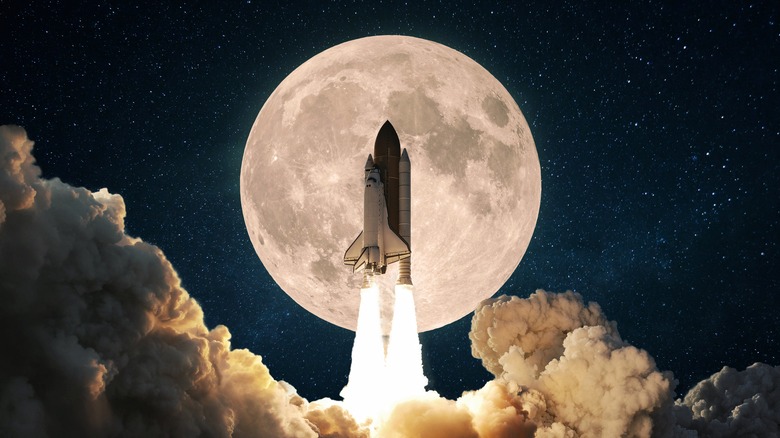The Artemis Space Mission Comes With A Hefty Price Tag
NASA's Artemis program has the goal of bringing humanity back to the moon, as well as allowing the first humans to step foot on Mars. According to NASA, this program will use new technologies to study the lunar surface and allow astronauts to have a long-term presence on the moon. This ambitious mission may tell us more about the moon and Mars than we've ever known before, including opportunities to help humanity in the long term. But how much does this program cost?
Recently, an auditor for NASA appeared before Congress to discuss the Artemis program. Speaking to lawmakers during a meeting of the House Subcommittee on Space and Aeronautics, NASA inspector general Paul Martin stated, "We found that the first four Artemis missions will each cost $4.1 billion per launch, a price tag that strikes us as unsustainable" (via CNBC News). On top of this, the Artemis program is expected to cost around $93 billion by 2025, according to Space.com.
Why is going to space so expensive?
The reason behind NASA's Artemis program's climbing costs is complicated, with many factors contributing to the price tag. According to a report published by the NASA Office of Inspector General, the greatest cost for the Artemis program will be exploration systems development. This includes the Space Launch System (SLS) and Orion Crew Capsule, which are the most important parts needed for the Artemis missions (via Space.com).
According to NASA, the SLS is a super heavy-lift launch vehicle that will allow the Orion Crew Capsule to escape the pull of Earth's gravity. Further, the rocket is meant to be "evolvable," which will enable NASA to use it for more than one mission. Perhaps most significantly, however, NASA explains the SLS is the only rocket capable of carrying the payload Artemis will need.
Based on the price and payload estimate given by NASA's inspector general, Universe Today reports it will cost $58,000 per kilogram launched. Contributing factors to the payload's massive weight include fuel, parts, personnel, and cargo.
NASA represents only a fraction of government spending
Surprisingly, NASA's Artemis program is not the most costly expenditure to come from the space agency. According to The Planetary Society, the United States spent around $28 billion to fund the Apollo missions, which is around $280 billion in today's money. The Apollo program was not the only project NASA funded during that time either. The agency spent an estimated total of $49.4 billion ($482 billion adjusted) between 1960 and 1973.
While these numbers may seem shocking, they're surprisingly nothing when compared to other spending done by the U.S. According to the Office of Management and Budget (OMB), NASA received 0.5% of the $4.8 trillion total federal budget for FY 2021. That comes out to around half a penny of every tax dollar. From that 0.5% of the nation's annual budget, NASA is able to contribute a lot of value.
Per an economic impact study by NASA, the agency generated more than $64.3 billion in economic output and supported more than 312,000 jobs nationwide in 2019. Despite the high price tag, NASA's Artemis program could mean further economic growth for the U.S., leading to more jobs, new breakthroughs in technology, and new discoveries.


